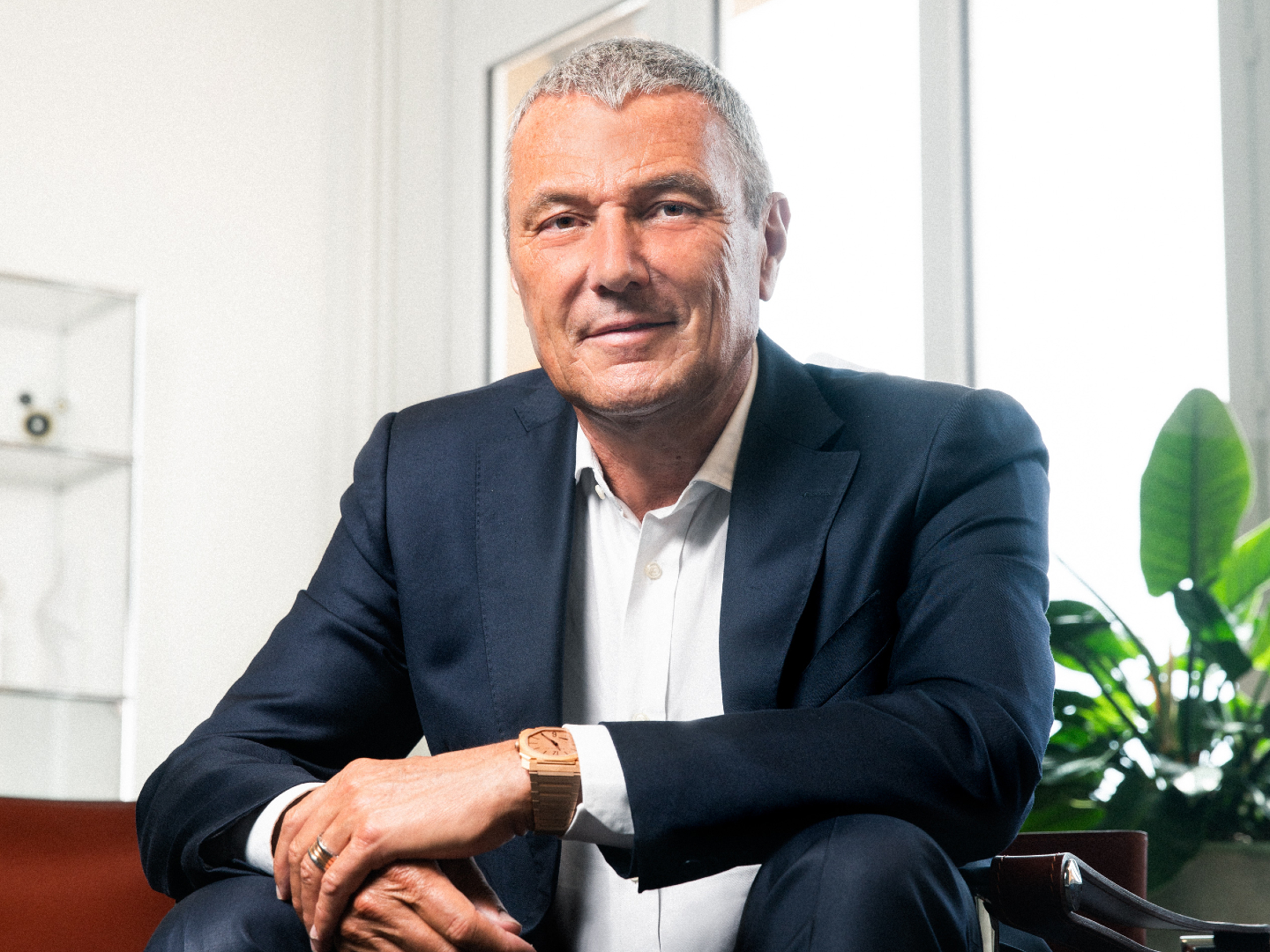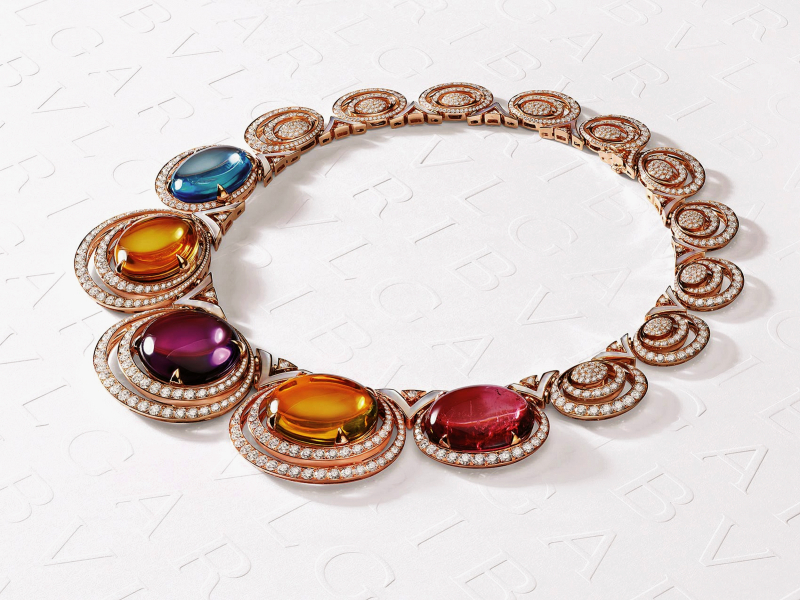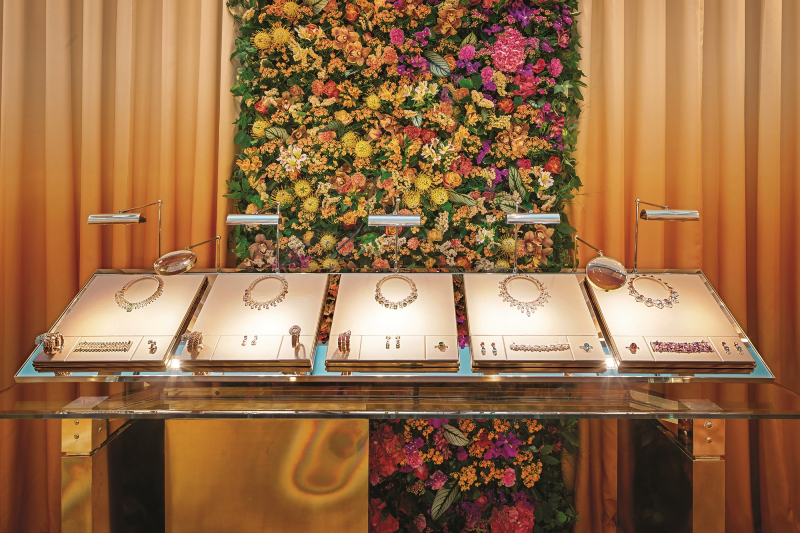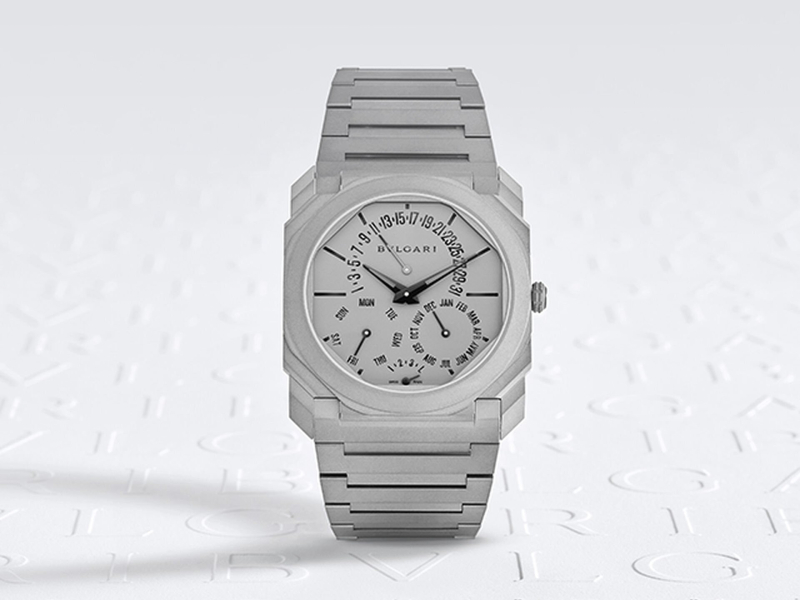
Babin joined the maison in 2013, after almost 13 years heading TAG Heuer (All photos: Bvlgari)
Early June may have seemed like an odd time for Bvlgari to launch the most extravagant and expensive collection of high jewellery it has ever made, but CEO Jean-Christophe Babin saw it differently. Aptly dubbed Magnifica, it was unveiled in the fashion capital of Milan just as Italy emerged from the throes of the pandemic that had gripped it for much of last year.
“Our clients’ appetite for beauty, craftsmanship and masterpieces of high jewellery is still there, so we were more optimistic than ever,” Babin says via a video call from Milan. “Over 60 pieces in the collection cost more than US$1 million, and while we didn’t sell them all, the sales were more than we had expected. It’s a sign of the trust people place in fine jewellery and in Bvlgari, and also confirms the attractiveness of the collection itself.”
Attractive, it must be said, is an understatement. The Magnifica collection consists of 350 extraordinary masterpieces of haute joaillerie that manifest both the maison’s Roman DNA and its 137 years of experience as a jeweller. It is also an ode to the most precious and rarest gems that Bvlgari has been able to source from around the world — from a 131.24-carat spinel, the fourth largest in the world by carat weight but the most beautiful in terms of quality, to a 93-carat Colombian emerald that is treasured in the jaws of a seductive snake injected with an alluring sense of movement. In addition, five marvellous oval cushion-cut Paraiba tourmalines, some of the rarest gems in the world, exude a refreshing sense of purity, echoing the crystal-clear waters of the Mediterranean.
bulgari_colour_waves.jpg

Splendid examples of lightness and supple movement, the collection also breaks new ground in terms of versatility and transformability as it was conceived to be worn in a variety of ways. “Many of the pieces can be detached and used as a brooch or a pendant, and this provides our buyers with so many choices. In terms of craftsmanship, we have never spent so many hours crafting each piece. It took anywhere from 1,200 to 2,600 hours for each one, which for Bvlgari is a record. This is not just because of the construction but also the built-in wearability, which is more complex and takes longer to craft,” Babin explains, crediting the extraordinary skill of the company’s team of designers and craftspeople.
Such a legendary collection would ordinarily result in an event of equally dramatic proportions with customers and guests flying in from all over the world, but the pandemic called for a more sensitive and creative approach. Hence, the two-day launch in Milan was thoughtfully designed to celebrate the city while also signifying the Italian fashion capital’s rebirth after the pandemic.
On June 3, Bvlgari invited its guests to the iconic La Scala Theatre for an authentic Italian operatic experience with a concert directed by Pietro Mianiti, featuring music from Giuseppe Verdi, Giacomo Puccini and Vincenzo Bellini. The following day, in the lush gardens of the Bvlgari Hotel, the Greco-Italian jeweller showcased pieces from the Magnifica collection over lunch, which was prepared by Michelin-starred chef Niko Romito while Beatrice Venezi, the youngest orchestra conductor in Italy, provided entertainment.
_mg_0921_1.jpg

As a nod to Italians still mourning the loss of family and friends due to the pandemic and a gesture of solidarity, Bvlgari carefully chose all the fresh flowers used at the event so that they could then be given to the city of Bergamo, which registered Italy’s highest death toll. “It was a pleasure to do something small for this city, to give them a small joy after all the loss they have suffered. It is emblematic of the company’s generosity, but also the company’s aim to reuse everything we can for multiple purposes. Our gold is recycled, so why not our flowers? This is very much in our blood and our DNA.”
Similarly, the municipality of Milan received a well-deserved boost with the Magnifica launch. “We managed to get permission from the authorities to proceed with a public event, but of course there were many rules in place that partners and suppliers had to adhere to. But we did it and it was the first event in Milan in about a year, so the city council was also very supportive as a luxury brand was kick-starting events in a city famous for its fashion. Post-pandemic, it was the first event for jewellery, for Milan and, I would say, for Italy,” Babin shares. “The number of clients who attended was not at pre-Covid-19 levels, as many guests could not fly in and join us from Asia and the US. But the event was broadcast globally and the collection will travel to Southeast Asia, Japan, China, the US and then the Middle East. Milan was the first step of the world tour.”
The global broadcast on June 21 was of a runway show at Milan’s legendary Galleria Vittorio Emanuele II. With its soaring glass-vaulted roof and intricate mosaic-tiled floor, this shopping gallery dates back to 1865 and epitomises the glamour and elegance of the Belle Epoque era. Joining models on stage was celebrated tenor Andrea Bocelli, who — fresh from his starring performance at the UEFA Euro 2020 opening ceremony — sang Beethoven’s Ode to Joy in his native Italian. It was an appropriate choice indeed for a collection that is focused on creating positive emotions in the wearer and the observer, and by extension, the happiness that Bvlgari hopes to inspire amid such trying times.
One wonders, might this have been Sotirio Bulgari’s objective all along? While he could never have anticipated the happenings of the last two years, Bvlgari’s Greek founder did future-proof his business by imbibing it with a strong foundation and a sense of joyous adventure. Right from his early silver pieces that combined floral motifs with elements from Byzantine and Islamic art and jewellery set with coloured gemstones to his celebrated Via Condotti store in Rome, Sotirio knew he may have been selling jewellery, but in actual fact, was in the business of inspiring desire and sparking fascination.
For example, the company only started making men’s watches because husbands who accompanied their wives to the store had nothing to see or do, thus the idea was to give them something to be excited about. It is arguable that this was a move to eventually enhance the company’s bottom line, but the initial idea was simply to make its customers happy. “Those watches were not even sold, but gifted,” Babin says. “It was a quartz digital watch, which in 1975 had just premiered, and was given to male clients as a present along with a glass of wine for patiently waiting for their wives to select their jewellery. Those watches were so loved and appreciated that we decided to introduce men’s watches to Bvlgari’s portfolio.”
In 1977, the Bvlgari Bvlgari was the first men’s watch produced to scale and three years later, a watch business unit was established in Switzerland. Today, the maison’s watches are some of the best-loved and most respected in the industry, with the Octo Finissimo in particular hailed as a design star. After almost 13 years heading TAG Heuer — during which time Babin graced the cover of Options and its pages more than once — he has gained an instinctive knowledge of the industry and continues to support Bvlgari’s growth in this segment. Since he joined the maison in 2013, the Octo Finissimo range has continued to grow and at this year’s Watches and Wonders fair, broke its seventh record in as many years for the slimmest perpetual calendar ever made.
image-octo-finissimo-s-listing_1.jpg

Much of Asia remotely witnessed the goings-on of the fair in April — as was the case for the more recent Geneva Watch Days — which was specially designed to accommodate both real-life and digital experiences. Babin has been a familiar presence at watch fairs for the better part of the last two decades and while he misses the face-to-face interaction at these events, he admits there is much to be said about the alternative.
“We have missed being at watch fairs, but we have been able to connect with stakeholders in more engaging and meaningful ways on digital platforms. It’s also nice for our guests, who can chat at leisure instead of rushing off to the next meeting at another booth as is often the case,” he quips, while cheekily confessing that the espresso bar and the constant supply of fresh croissants at the fair was something he did quite look forward to.
While none of us has enjoyed being weighed down by the stress of the pandemic, there has been some joy in the lessons we have learnt along the way — most importantly, the value of the digital tools at our disposal and how to make the best use of them. This also applies to Babin, and Bvlgari.
“We have learnt that we can be much more efficient by using the digital tools that we never took advantage of before,” he admits. “In doing so, we have maximised our impact both internally and externally, with the time saved on travelling reinvested in more meaningful conversations and discussions. Personally, I have met with more people in the company and beyond than I ever would have normally — on a Zoom screen I can fit so many people! Of course, we are missing real-life interactions, but we have increased alignment, cohesion and mutual respect in the company.”
Babin and his team have also had the time to consider what Bvlgari’s post-pandemic future would look like as a multifaceted company in the luxury sphere — it is about inspiring delight beyond the presence of a product, which is something the company is all set to do with its existing commitment to creating an environment in which everyone can thrive through social, environmental and economic progress.
“What our customers want to know more of now are the behind-the-scenes stories — our ethics, sustainability, craftsmanship,” Babin says in earnest. “They want to make sure they buy not just a nice piece, but a good piece. And by this, I mean something that has been crafted by good people, gems that have been obtained safely from good mines. They want to buy from companies that are generous and giving in times of crisis, like how our perfume factories pivoted to make sanitising gel for hospitals at the start of the pandemic. It’s more of these elements that come under the spotlight now, not just our beautiful jewellery and watches.”
Marie Kondo’s oft-quoted mantra of sparking joy resonates with so many people quite so deeply because it requires a strong and singular focus on what inspires happiness. Because Sotirio once did this with his passion for quality craftsmanship and as Babin does so now by championing the maison’s commitment to a sustainable future for luxury, it does seem that there can only be happy days ahead for Bvlgari.
This article first appeared on Sept 27, 2021 in The Edge Malaysia.


